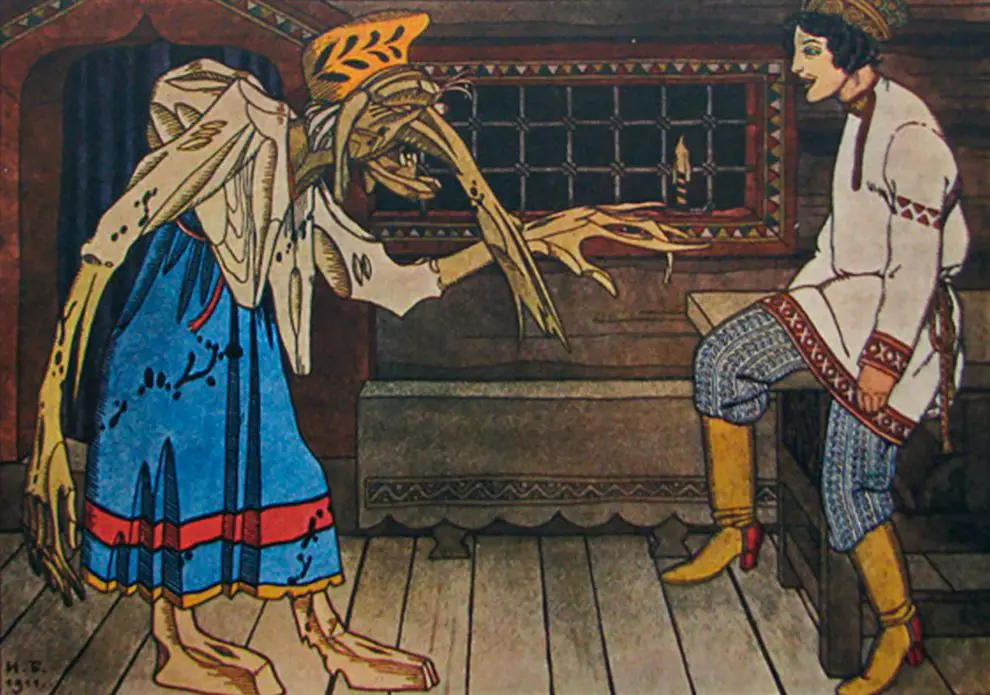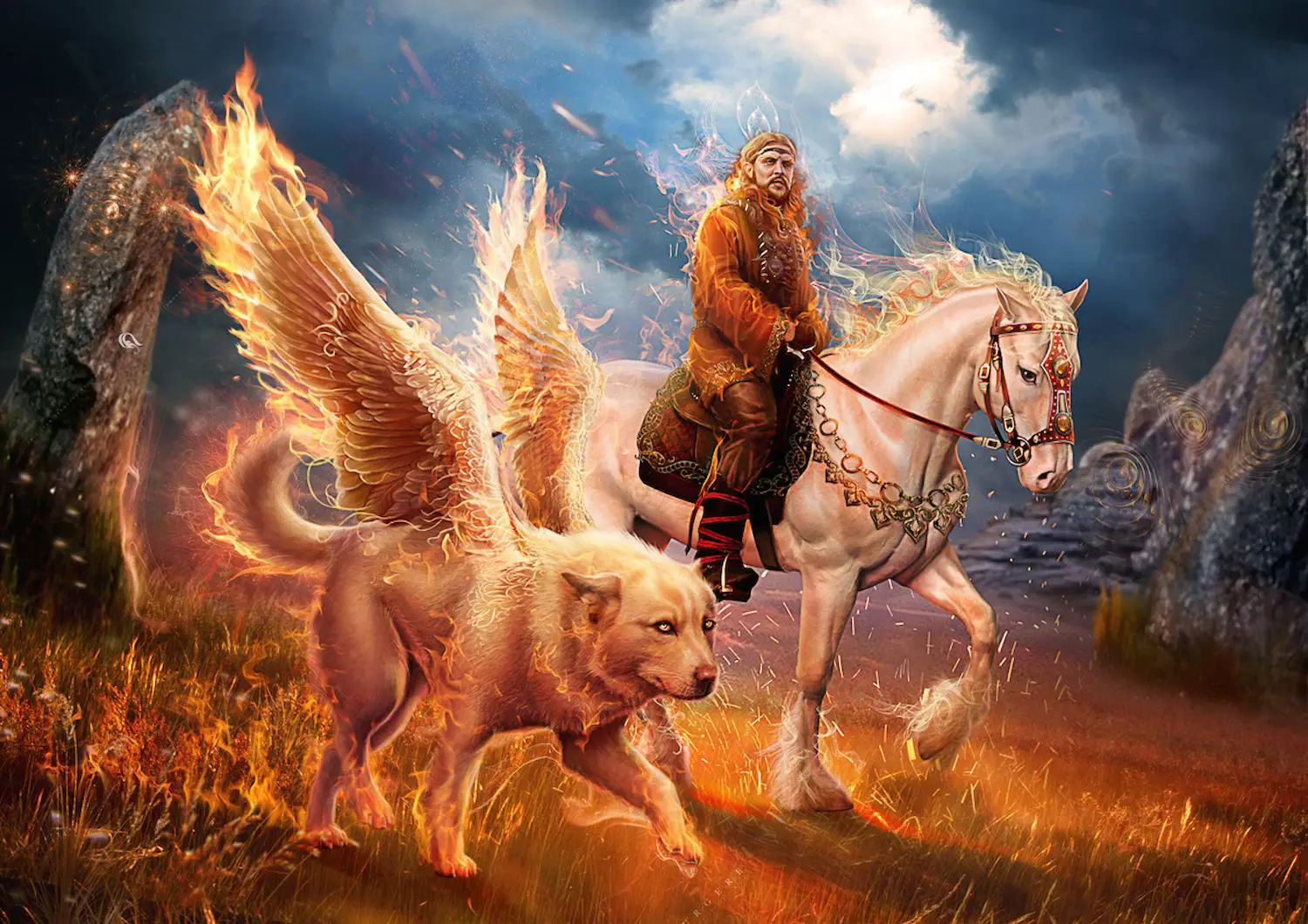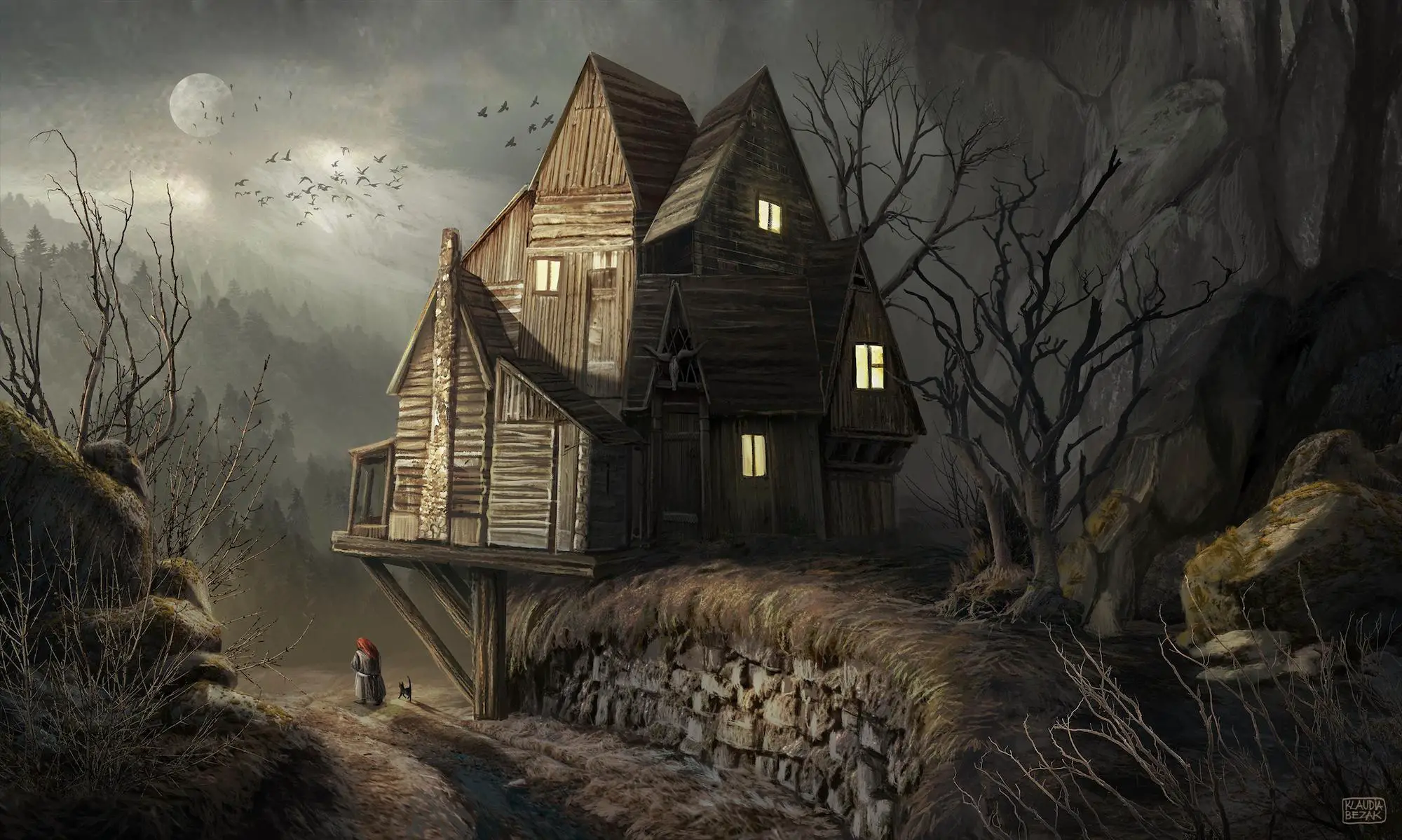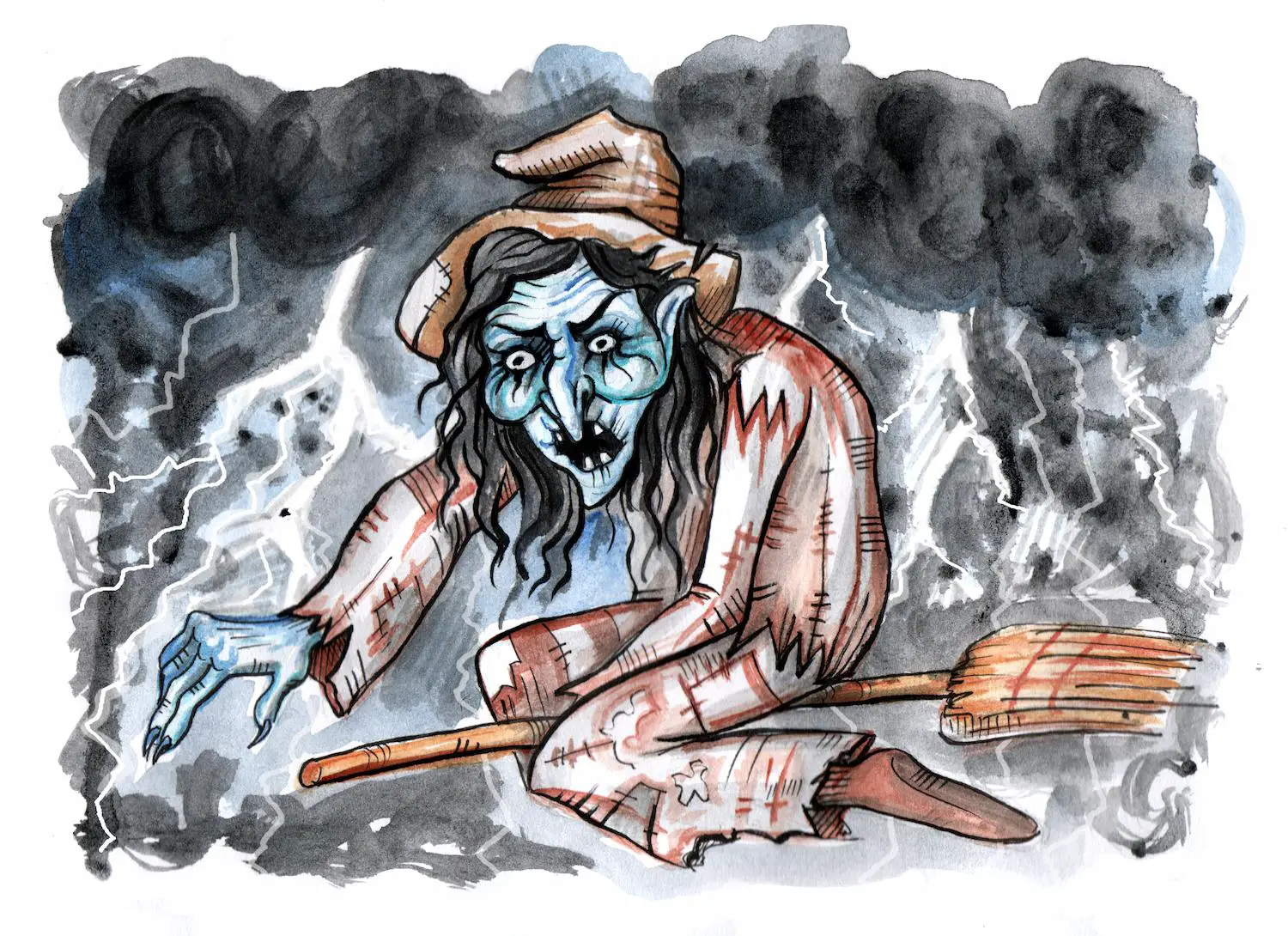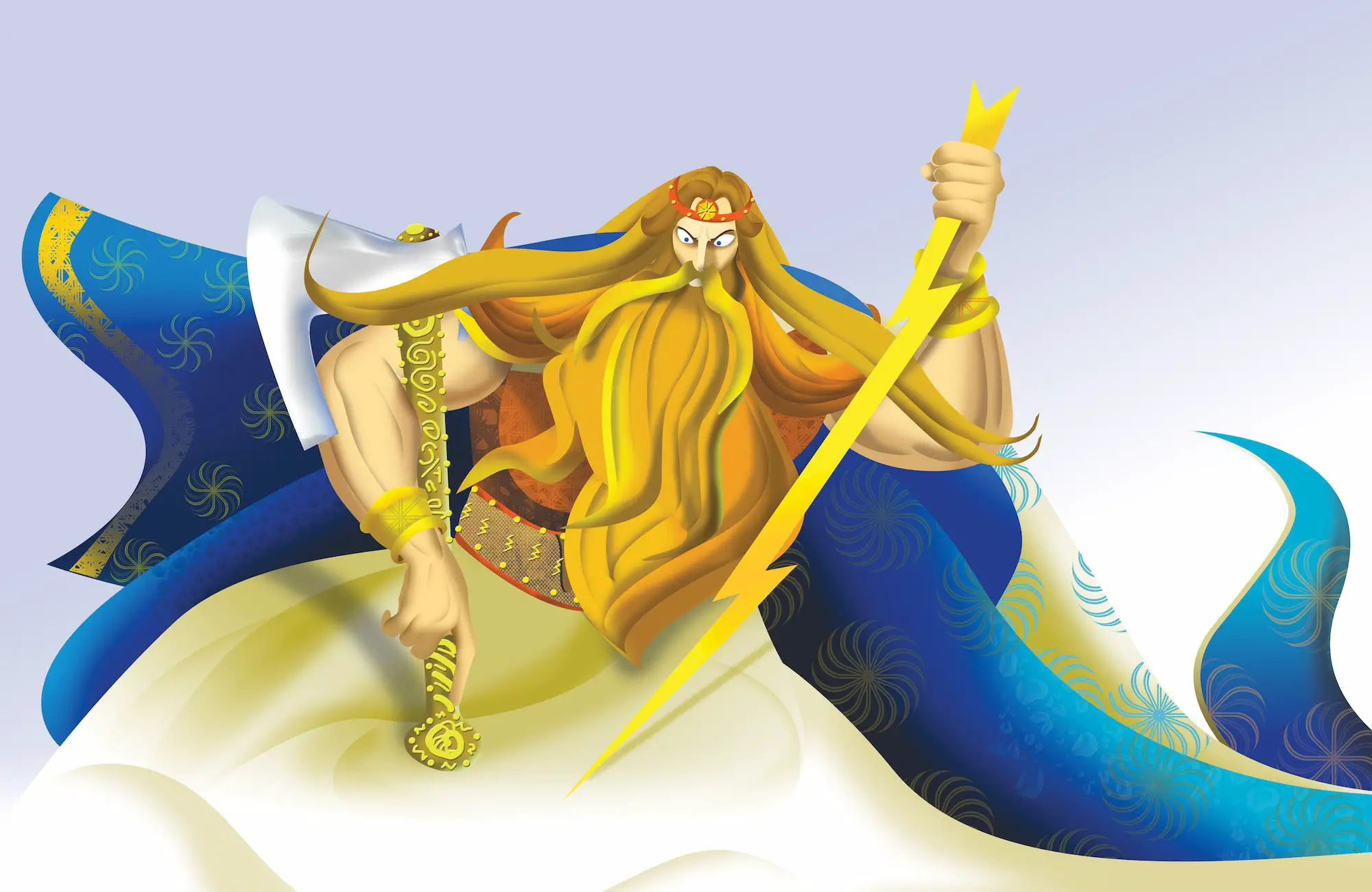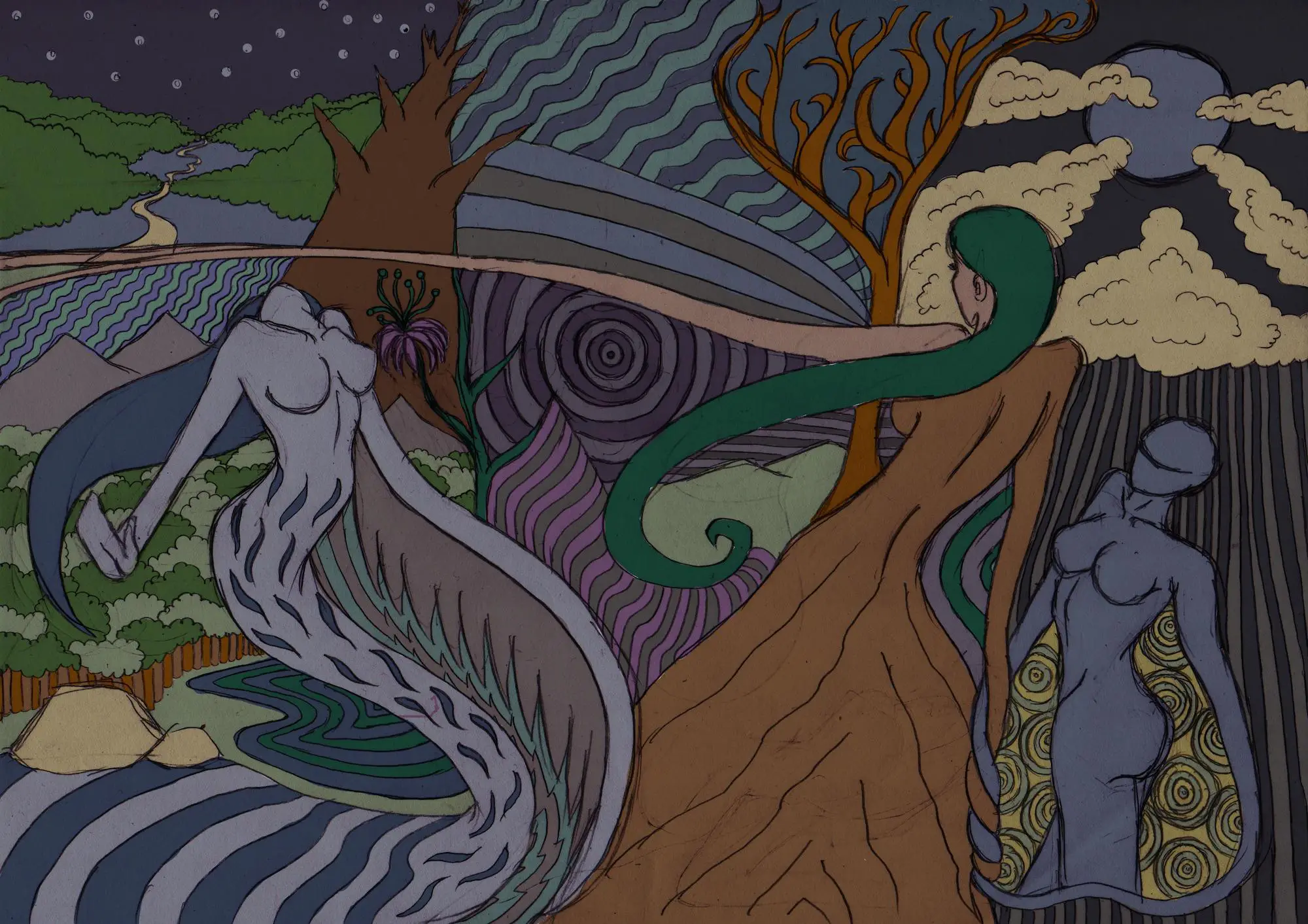The folklore of Russia is the folklore of today’s Russians and all other ethnic groups in the country. Russian folklore stems from the so-called Slavic paganism, i.e. the folk tradition and beliefs of ancient Slavs that for centuries has been a controversial matter in academic circles.
Although today’s knowledge of Slavic culture associates its mythology with creatures such as vampires and strigoi that, reportedly, originate in ancient Slavic demonology, the concept of Slavic, i.e. Russian folklore continues to be a mystery that is mainly analyzed through Russian fairy tales or bylinas.
Table of Contents
Russian Mythology
The Russian fairy tales became an available source of information between 1855 and 1863 when the Russian Slavist, folk collector, and ethnographer Alexander Afanasyev published a collection of 600 Russian fairy tales and folktales. The work was made according to Grimm’s Fairy Tales published in 1812.
The bylinas are the heroic tales of Old Russia which include characters and figures such as dragons, giants, spirits, knights, epic battles, underwater kingdoms, and whistling brigands. The major theme in these tales is the “do and dare” principle which has been an inspiration and entertainment for centuries.
The bylinas have appeared somewhere around the 10th century in the form of epic tales that were preserved through oral tradition. They are short but rich in content, though only a hundred lines long. These were more often sung and sometimes accompanied by a stringed instrument gusli.
Both folktales and bylinas were originally sung in royal courts by professional bards before they were spread further to the countryside to be sung or told by peasant storytellers.
Russian Folklore
The Russian folklore was recorded and collected by scholars who traced the relations between early versions of folk tales and legends with Slavic myths.
During the so-called “Golden Age of Kiev” or the prosperous period of Kievan Rus, the Russian folklore and tradition experienced extensive challenges and changes.
Kievan Rus was the historical state from 880 AD to 1240 and a forerunner to the Russian state. During its establishment, the famous King Vladimir I brought and enforced Christianity along with his rule.
The Christianization was slowly implemented on the territory of Slavic-speaking countries, including Russia and many of the pagan beliefs and customs remained or were kept by being modified and incorporated in Christian practices and rituals.
The beliefs and praise of a great number of deities remained as well as the legends and myths that were handed down to upcoming generations.
Here is a list of 15 Russian myths and legends that are worth exploring:
Russian Myths and Legends
1. The Myth of Azhdaya
The myth of Azhdaya tells the story of a demonized dragon. The Russian word “zmay” means “dragon” and it refers to the folk belief that it was created from a serpent that could live up to being 100 years old and have two or more heads.
The Azhdaya looks like an evil creature that spits fire and releases an anguishing roar. It lives in the mountains or in caves and often spills its anger on humans by causing hailstorms or attacks on cattle or humans.
According to the historical records of folklore in Slavic religion or paganism, Christianity adopted the Azhdaya as a representation of the devil which is presented as a greedy, hungry, and hostile creature.
2. The Myth of Alkonost
In Russian folklore, the myth of Alkonost tells the story of the majestic bird-like creature Alkonost that lives in Iriy (Heaven).
Alkonost is a beautiful bird with wings, tail, and legs of a bird but a head and torso of a woman. It has a beautiful voice and it brings messages from the otherworld by singing songs.
When winter comes, she flies above the sea and lays eggs on sea shores but then drops them on the bottom of the sea. Seven days later, when the eggs hatch, storms begin to roar, therefore Alkonost controls the weather.
3. The Myth of Baba Yaga
The legends and myths about Baba Yaga are one of the most popular when it comes to Russian folklore tradition. In a nutshell, although there are variations of this character, Slavic folk tales present Baba Yaga as a supernatural being that appears as a cruel, deformed old woman.
Baba Yaga lives in a hut in the woods and stands on chicken legs. In most of the tales, she rides a broom or a mortar and uses a pestle as a weapon. She scares children and also eats them.
However, some tale versions present Baba Yaga as a character of wisdom that can also help those who are looking for her or encounter her.
Her role in mythology is maternal, though enigmatic, associated with the power of forest wildlife.
Nevertheless, Baba Yaga is one of the most memorable and distinctive in Eastern European folklore.
4. The Myth of Babaroga
Babaroga is a mythical creature best known among the Southern Slavs. The Slavic mythology represents her figure as an ugly, hunchbacked old woman that has a horn that is growing out of her forehead.
The name of Baba Roga actually stems from her distinctive facial feature, i.e. the horn on her head since the word “rog” in Russian means “horn”.
Baba Roga lives in dark caves in the mountain and in the forest where sunlight approaches only at Midsummer (in Russian “Ivanjdan”) which is actually the only day when she leaves the cave and carries her broom with her.
According to the tale, Baba Roga visits sleeping children at night, tucks them in, and brings them pleasant dreams. It was believed that if a child wakes up and sees her, she would let it be scared so that the trauma would prepare it for the hardships of adult life.
5. The Legend of Balachko
Among the many Russian mythological creatures is also the legend of the giant Balachko.
Balachko is a giant with three heads. From one of the heads he could spit fire, from the other he could breathe in freezing air from cold winds.
The fire and the cold wind were this giant’s weapons and when he would finally spend the last reserves, he needed some time before he would recuperate again. At that moment, he would have no protection and become an easy target to kill.
According to the legend, one of the Russian Tzars used this opportunity to kill the giant and save the princess that was kidnapped by Balachko.
6. The Legend of Bauk
In the history of Souther Slavic beliefs, Bauk was a scary animal-like creature with a peculiar way of walking.
According to the legend, Bauk was hiding in dark places or abandoned buildings where he would sit and lurk at preys that he would eventually grab and devour.
The only way to scare him off was to use light and noise. Some interpretation of the attributes of bauk have brought out the conclusion that this mythical creature is actually a description of a real bear.
7. The Myth of Beda
The Myth of Beda tells the story of a demon that was mainly recognized in the realm of Southern Slavic folklore.
Beda is presented as a skinny and slimy creature that reproduces fast and likes to steal people’s belongings and then bury them underground.
The word “beda” can be translated as “misery” which obviously refers to an evil creature that brings hardships to humanity.
Beda is a descent of ghosts and in some versions of Chuma, a mythological personification of plague.
Beda wonders around the world attacks people and tortures their souls and bodies. In the history of Russian folklore, there are even sayings that mention Beda that refer to a person’s ill faith or destiny.
8. The Legend of Besomar
In Russian mythology, Besomar is presented as a demon that is associated with hatred and disgust. According to some versions of the legend about this demon, he is the supreme demon- god of all evil spirits.
His name derives from the word “bes” which means “rage, anger” in English, and “mora” which translates to “torture, death”.
9. The Legend of Gostomysi
The Russian legend of Gostomysl is a challenge to every modern historian and it is related to a prince from Novogorod in the 9th century.
According to the legend, during his rule, Gostomysl confederated the Northern tribes which countered the Varangian threat in the middle of the 9th century and unified the Chuds, Ilmen Slavs, Krivchs, and Merya.
According to some historians, the capital of this confederation was in today’s Russia, and Gostomysl was one of the leaders.
10. The Myth of Chernava
Chernava is a mythological character that is presented as a mermaid and the daughter of the Sea Tsar (Morskoy Tsar in Russian). She is also the spirit that personifies a river with the same name.
The head and the torso of Chernava are of a human female while the lower body has a fishtail.
In one of the bylinas, Chernava is described as one of the 900 mermaids. She is a young, tiny girl who is offered to the musician bard Sadko who was trapped in the underwater kingdom to be his new wife by the Sea Tsar.
Sadko accepted and took her by on their wedding night he didn’t touch her but just lay beside her. When he was asleep, Chernava turned into a river and helped him to flow back into the human world so he worked up on the shore by the river Chernava and was finally back in the arms of his first wife.
11. The Legend of Ded Moroz
One of the popular stories of today’s mass culture, the story about Santa Claus, has its version in the Slavic mythology and Russian tradition, among the many others scattered around the world.
Ded Moroz is a legendary character and figure whose cognates are Father Christmas and Santa Claus. The tradition related to Ded Moroz is an integral part of Russian culture and East Slavic countries.
Ded Moroz is presented as an old, chubby, tall elderly man with white hair and beard who brings presents to well-behaved kids at New Year’s Eve or Christmas (depending on the specific tradition).
Dedo Moroz has a helper and her name is Snegurochka (Snow maiden). Snegurochka is dressed in long pale blue and silver robes and a white furry hat or crown made of snowflakes.
She is his granddaughter and a unique companion since there are no other cultures that present Santa tales with female helpers and companions.
According to the legend, Ded Moroz’s residence in Russia in the town of Veliky Ustyug in Vologda Oblast.
At the beginnings of the Soviet era, Dedo Moroz was banned by the communists but later he became a significant element of the Soviet culture.
12. The Myth of Kikimora
Slavic mythology represents Kikimora as a female house spirit and Russian folklore describes it as a creature that is the “bad” spirit of the house. Kikimora is always standing shoulder to shoulder with Domovoy who is the “good” domestic spirit.
It is said that Kikimora lives behind the kitchen stove or on the ceiling and at night makes sounds that are similar to house mice.
In fact, the Russians referred to Kikimory (plural form) in order to explain sleep paralysis, therefore, the Kikimora is considered a demonic visitation.
13. The Myth of Domovoy
According to the Slavic and Russian tradition, Domovoy is the good spirit of one’s home and a household god.
According to the Russian folklorists, Domovoy personifies the supreme deity in Slavic paganism called Rod which relates to one’s personal destiny or a life plan given at arrival on this world.
In some versions, Domovoy has a female companion called Domania and she is presented as the goddess of the home. In the tale, Domovoy has the ability to turn into many other spirits and change functions in the home in different situations.
It is believed that Domovoy protects the well-being of a family and it is especially protective toward children and animals. It shares the good and the bad with people of a family and warns them of any possible calamities that may come as a threat of the kin.
The common representation of a Domovoy is as an elderly man with grey hair and big flashing eyes, though some tale versions manifest his spirit in the form of an animal or a long-departed ancestor in a family.
14. The Legend of the Mistress of the Copper Mountain
The Legend of the Mistress of the Copper Mountain refers to a character from Russian fairy tales and Slavic mythology, also known as “The Malachite Maid”.
She is a creature that personifies the mountain spirit of the Ural Mountains and Ural Miners in Russia. The Maid is described as an enchantingly beautiful woman with green eyes who wears a beautiful malachite gown.
Her hair is braided and she wears ribbons made of copper as well as precious stones as accessories. The Maid is a mountain spirit that is always surrounded by small lizards in her underground riches.
According to the legend, if a miner or a person sees her, she will use magic and spells to enchant them. The Maid also can be kind and help people to find gold or gems but if they fail to obey her they may lose their luck and even end in fatal death.
The legend has been told in several variations over time and miners have also adopted this folk character as their patroness and protector of the underground who can control the mining of metals and stones.
The sacral element in the myth about the Maid brought observation of a number of rituals, therefore, women never went down in the mine as it was considered a place ruled only by the Maid, and young men who sought help from her never married. Children on the other hand were told to be quiet when going down in the mines in order not to disturb her.
15. The Legend of Sinyushka’s Well
Slavic mythology contains the legendary tale of Sinyushka’s Well also known as “The Blue Crone’s Spring” or “The Blue Grandma of the Marsh”.
This folk tale originated in Siberia, in the Ural mountains and it is one of the most popular stories in Russian folklore even today.
This legend is told by an imaginary old man called Old Man Slyshko (Ded Slyshko in Russian, i.e. Grandpa Slyshko). Synushka’s well is in the mountains and it is covered by fog. It protects the mountain riches from bad, greedy people.
A man walks in the mountains and comes near the well to drink water when a crone, i.e. Synushka emerges from the water and orders the man to come back at a full moon and she’ll make him rich.
The man is interested only in her beauty but she showed her face only to brave people,
The man could never forget her but married another girl who looked like her and shortly after faced his tragic faith when his beloved died of tuberculosis.







